Car seat safety
- 0-1 Years
- 1-5 Years
- 5-11 Years
- Staying safe and accident prevention
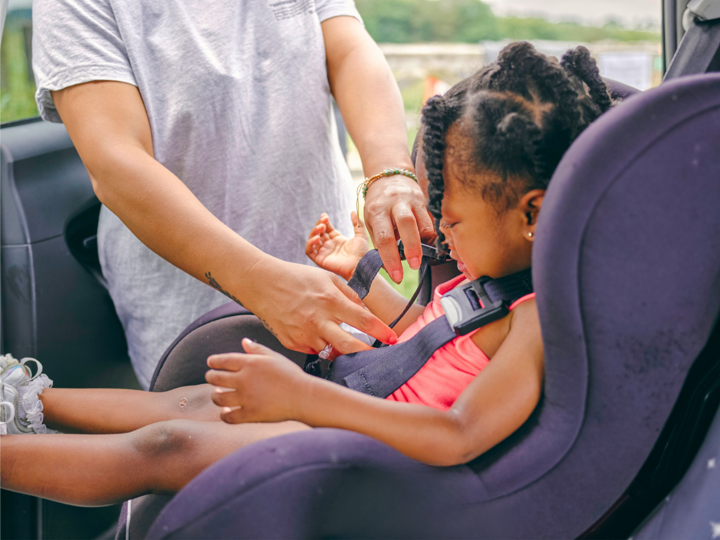
By UK law, your baby or child must use a car seat or booster seat to travel in vehicles. This is until your child is 12 years old or 135cm tall, whichever comes first. A child car seat is the safest way for children to travel in vehicles.
Children and young people aged 12 years old and older or taller than 135 must wear a seatbelt when travelling in a vehicle.
Explore the topics on this page:
Car seat regulations
Only EU-approved car seats can be used in the UK. The approval is through the Economic Commission for Europe (ECE).
To be EU-approved, the car seat must comply with ECE R129 or ECE R44 regulations.
R129 - This is a height-based seat, also known as i-Size seats. The type of seat your baby or child can use depends on their height.
R44 - This is a weight-based seat. The type of seat your baby or child can use depends on their weight.
All car seats will have an orange label on the bottom of the seat. This will orange label will show:
- type of approval (ECE R44 or ECE R129)
- height or weight category for the car seat
- the code of the country where it was tested and approved (E11 is Britain's code)
- unique approval number
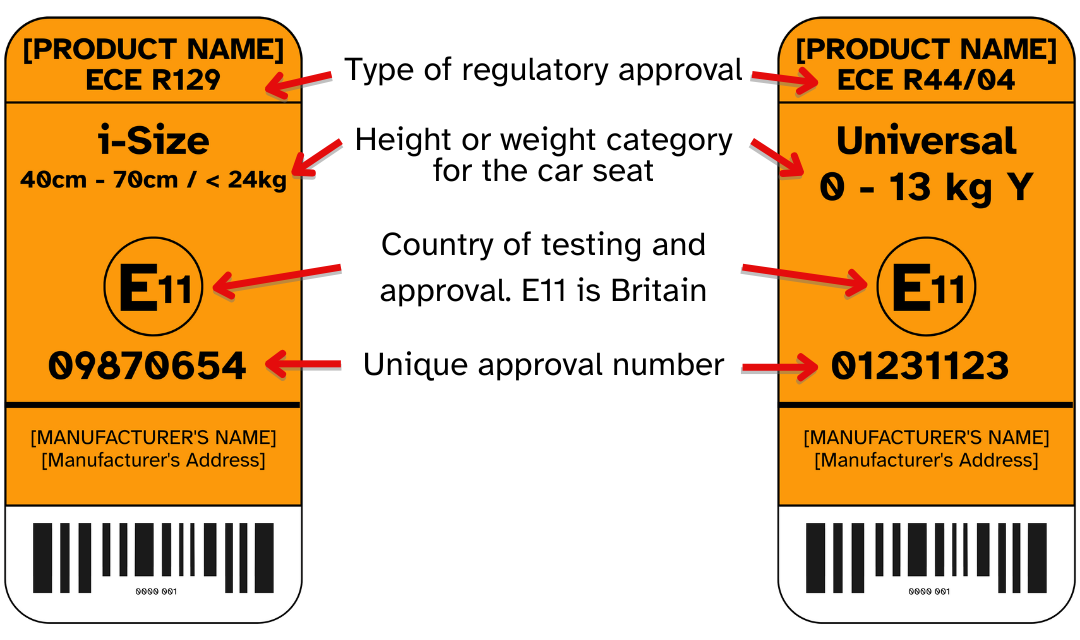
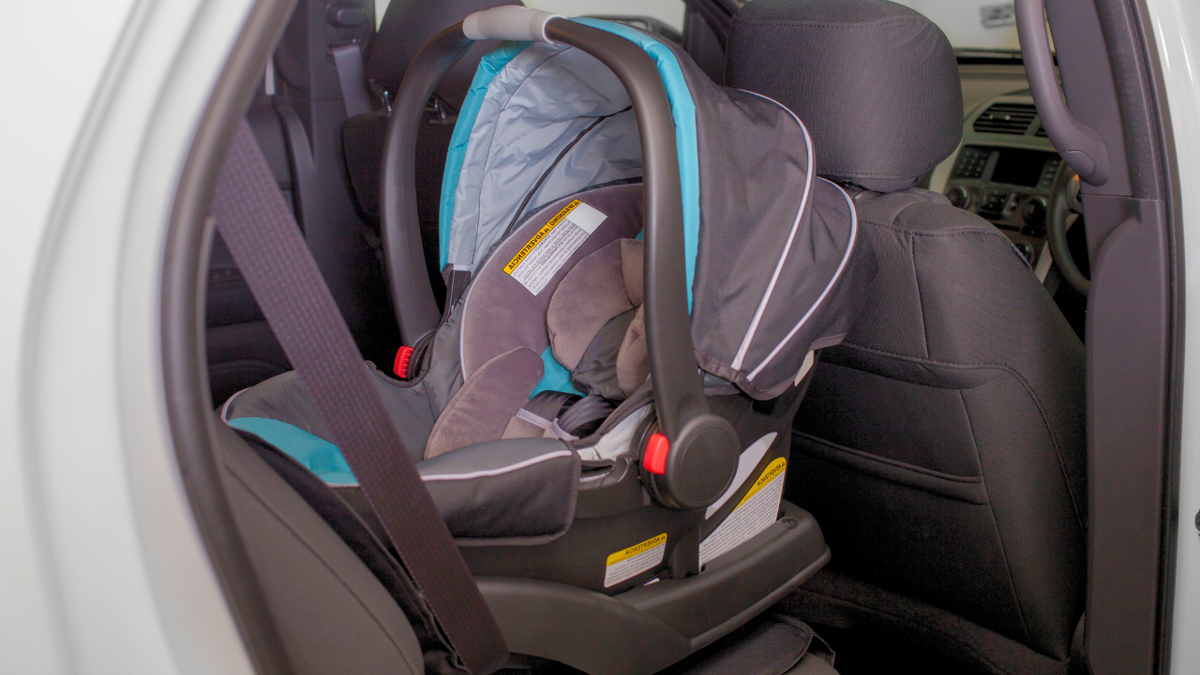
Babies must be carried in rearward-facing or rear-facing car seats for as long as possible. It is required by UK law that babies must be carried in rear facing car seats until they at at least 15 months old or weigh more than 9kg.
We recommend that your child uses a rear-facing car seat until they are 4 years old. This is because babies and young children have less developed skeletons.
In a rear-facing car seat, the car seat will absorb the 'force' of the crash. Babies and children are 90% to 95% protected from serious harm in a rear-facing car seat.
In a front-facing car seat, your baby or child's neck, spine and vital organs are at a higher risk of being seriously hurt. Babies and children are 60% to 70% protected from serious harm in a forward-facing car seat.
Research has shown that rear facing seats have better protection for children in car accidents.
Make sure to remove outdoor clothing, such as a winter coat or bulky layers, before strapping your baby into the car seat.
If you care concerned about your baby getting cold, cover them with a blanket. The best way to check your baby's temperature is to feel their tummy or the back of their neck.
Car seats are designed for travelling, not as a main sleeping place. Read more about sleeping safely in a car seat.
Tips for long journeys with babies
- Avoid travelling for long distances in the car with preterm and very young babies. This is because your baby's head can fall forwards, restricting their breathing.
- If you have to travel a long distance, take frequent breaks. Plan regular breaks in your journey to give your baby some time out of their car seat.
- If you are travelling alone, use a mirror to keep an eye on your baby.
- If your baby slumps forward, stop the car when you can safely, and take the baby out of the car seat.
- When you finish your car journey, take your baby out of the car seat even if they are asleep.
Choosing a car seat
Tips to help you choose a car seat:
- Choose a car seat that is right for your child’s height and weight.
- Make sure it is UK approved with an orange E11 mark label.
- Before buying a car seat, test it in your car. You can ask retail staff trained in child car seat safety.
- Make sure the car seat fits all the cars your child will travel in. Visit the Child Car Seat Fitting and Compatibility page on Child Car Seats.
- Avoid second-hand car seats. They could be faulty, damaged in an accident or have no instructions. Only accept second-hand car seats if you know the history, it has their instructions and it is not very old.
Height-based seats or i-size seats
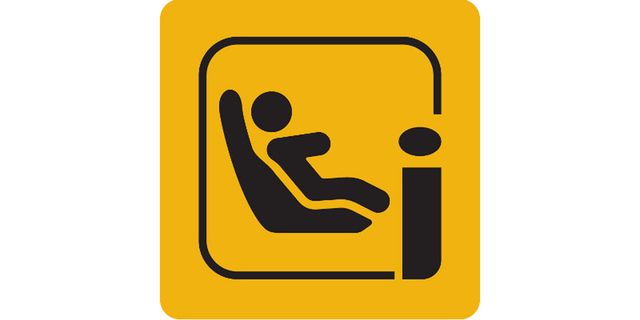
Height-based seats are also known as 'i-size' seats. The type of i-size seat your baby or child can use will depend on their height. These seats comply with R129.
In the crash tests, i-size seats are tested for front, rear and side impacts. i-size seats provide better protection from side impact crashes.
i-size seats are available in 3 sizes:
Up to 85cm - Rear-facing baby carrier or baby seat using a harness.
Up to 105cm - Rear-facing baby seat until your child is at 76cm, then becomes forward facing.
100cm to 150cm - Forward-facing child seat.
Some car seat brands will use the weight-based groups to categorise their i-size seats. Others will use the height categories.
i-size child car seats fit in cars that have ISOFIX fitting points, but you will still need to check if the seat is approved for your car. Contact your car manufacturer or the child seat manufacturer.
Visit the Child Car Seat Fitting and Compatibility page on Child Car Seats.
Weight-based seats
These are when the seat your baby or child can use depends on their weight.
Weight based groups
Weight-based seats are split into 5 groups. You may be able to choose from more than 1 type of seat in the group for your child's weight.
Combination seats
Some car seats are adjustable and will cover more than one group. As your child grows, you can adjust the seat to meet their needs. Combination seats can also be called extended seats or multi-group seats.
Booster seats
Booster seats will raise your child's seating position so that the car's seat belt fits them properly. This will reduce their likelihood of being injured in a car crash.
Booster seats have indicators or slots to show where the seatbelt should go. These indicators or slots are usually found at the shoulder height and waist height, often under the arm rests.
Weight-based seats (R44) will have red indicators or slots. Height-based seats (R129 or i-size) will have green indicators or slots.
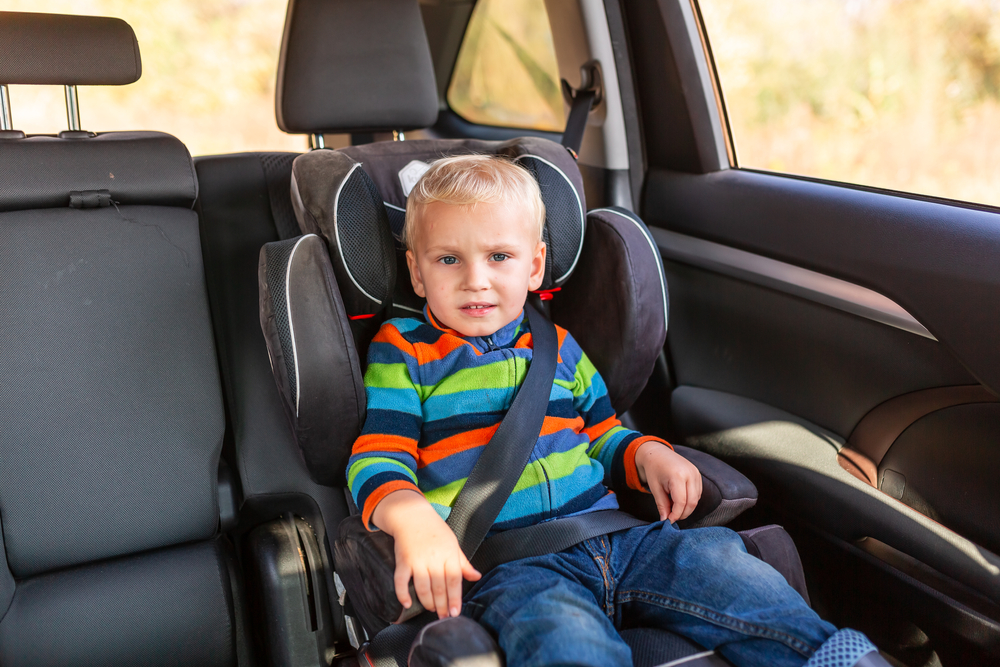
How a seatbelt should be worn in a booster seat
- Seatbelts should go across your child's pelvis, chest and shoulder.
- Seatbelts should be worn as tight as possible.
- Do not put the belt across your child's stomach. It should go over the pelvic region, between their tummy and top of their legs.
- Do not put the belt on your child's neck. It should rest over their shoulder.









